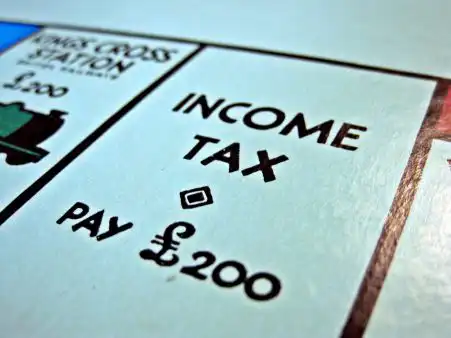A Guide to Repaying Student Loans when you’re Self-Employed

Student Loans – How are they repaid if I am self-employed?
In the UK, student loan repayments for PAYE employees are deducted automatically from their salary by their employer, using the PAYE (Pay As You Earn) system. The amount that is deducted depends on the employee’s income, and whether they have an outstanding student loan balance.
But what about if you are self-employed?
When you complete your self-assessment tax return, either as a sole trader or a director of a limited company, you’ll need to include the amount of student loan repayments you’ve made during the tax year. If you’re self-employed, your student loan repayments will be taken from your income through the tax system. This means that your tax bill will be higher than it would be if you didn’t have a student loan. If you’re a company director, then your earnings from your limited company would be charged against student loan repayments, if payments haven’t already been taken via PAYE.
You will need to know which student loan plan you are on, so HMRC can determine how much is due.
What kind of loans are there?
In the UK, there are two main types of student loans available to eligible students:
- Tuition Fee Loans: These loans cover the cost of tuition fees charged by universities and colleges. The amount of the loan you can get will depend on the cost of the tuition fees charged by your institution.
- Maintenance Loans: These loans are intended to help cover living costs, such as accommodation, food, and other expenses. The amount you can borrow will depend on your household income, where you live, and your course intensity.
Additionally, there are two more types of student loans that may be available to certain students:
- Postgraduate Loans: These loans are available to eligible students who are studying a postgraduate taught or research program. The amount you can borrow will depend on the type of course you are studying and whether you are studying full-time or part-time.
- Disabled Students’ Allowances (DSAs): These are grants rather than loans, and are available to eligible students with a disability, long-term health condition, mental health condition or specific learning difficulty (such as dyslexia). The amount you can receive will depend on your individual needs.
What are the different plans?
In the UK, there are currently four different student loan repayment plans. The plan you are on will depend on when you started your course and where you live. The four plans are:
- Plan 1: If you started your course before 1 September 2012, and you’re from England, Scotland, Wales or Northern Ireland, you will be on Plan 1. Under this plan, you’ll start repaying your loan in the April after you leave your course, and you’ll repay 9% of your income over the repayment threshold.
- Plan 2: If you started your course on or after 1 September 2012 but before the 1st February 2022, and you’re from England or Wales, you’ll be on Plan 2. Under this plan, you’ll start repaying your loan in the April after you leave your course, and you’ll repay 9% of your income over the repayment threshold.
- Plan 3: If you started your postgraduate master’s course on or after August 1, 2016; or started a postgraduate doctoral course on or after 1st August 201 and you’re from England or Wales or if you’re an EU student who started a postgraduate course on or after the 1st August 2016m then you’ll be on plan 3. Under this plan, you’ll start repaying your loan in the April after you leave your course, and you’ll repay 6% of your income over the repayment threshold.
- Plan 4: If you’re a Scottish student who started an undergraduate or postgraduate course anywhere in the UK on or after 1 September 1998, you’ll be on repayment Plan 4. This means you’ll pay 9% of the income you earn over the threshold to the Student Loan Company (SLC). This percentage stays the same if your salary rises.
- Plan 5: Plan 2: If you started your course on or after 1 February 2022, and you’re from England or Wales, you’ll be on Plan 5. Under this plan, you’ll start repaying your loan in the April after you leave your course, and you’ll repay 9% of your income over the repayment threshold.
- Postgraduate Loan: If you took out a Postgraduate Loan, you’ll be on the Postgraduate Loan Plan. Under this plan, you’ll start repaying your loan in the April after you leave your course, and you’ll repay 6% of your income over the repayment threshold.
What are the different thresholds?
The different thresholds for the 2023/24 tax year can be found below.
| Plan type | Yearly threshold |
| Plan 1 | £22,015 |
| Plan 2 | £27,295 |
| Plan 3 (Postgrad) | £21,000 |
| Plan 4 | £27,660 |
| Plan 5 | £25,000 |
It’s worth noting that the repayment threshold and interest rates on these plans can change over time. Additionally, if you have multiple student loans, you may be on different repayment plans for each loan.
You can check for updates on the HMRC website here.
What about if I pay myself dividends?
Yes, dividends are counted towards student loan earnings in the UK. If you receive dividend income through your limited company, it will be included in your total income for the purposes of calculating your student loan repayments.
Conclusion
The amount of student loan repayments you make depends on your total income, including any salary, bonuses, and other taxable income like dividends. If your income exceeds the repayment threshold for your student loan plan, you will be required to make repayments based on a percentage of your income that is above this threshold.
The percentage that you are required to repay is currently 9% of your income for plans 1, 2, 4 and 5 and 6% for plan 3 above the threshold. This includes any dividend income that you receive as a PAYE employee.
It’s worth noting that if you receive dividend income from investments outside of your PAYE employment, this income would also be counted towards your student loan earnings unless it is declared as taxable income on your self-assessment tax return.
Looking for an Accountant?
Contact us for accounting support! Simply fill out the form below, and our team of qualified accountants will be in touch with you soon.


















